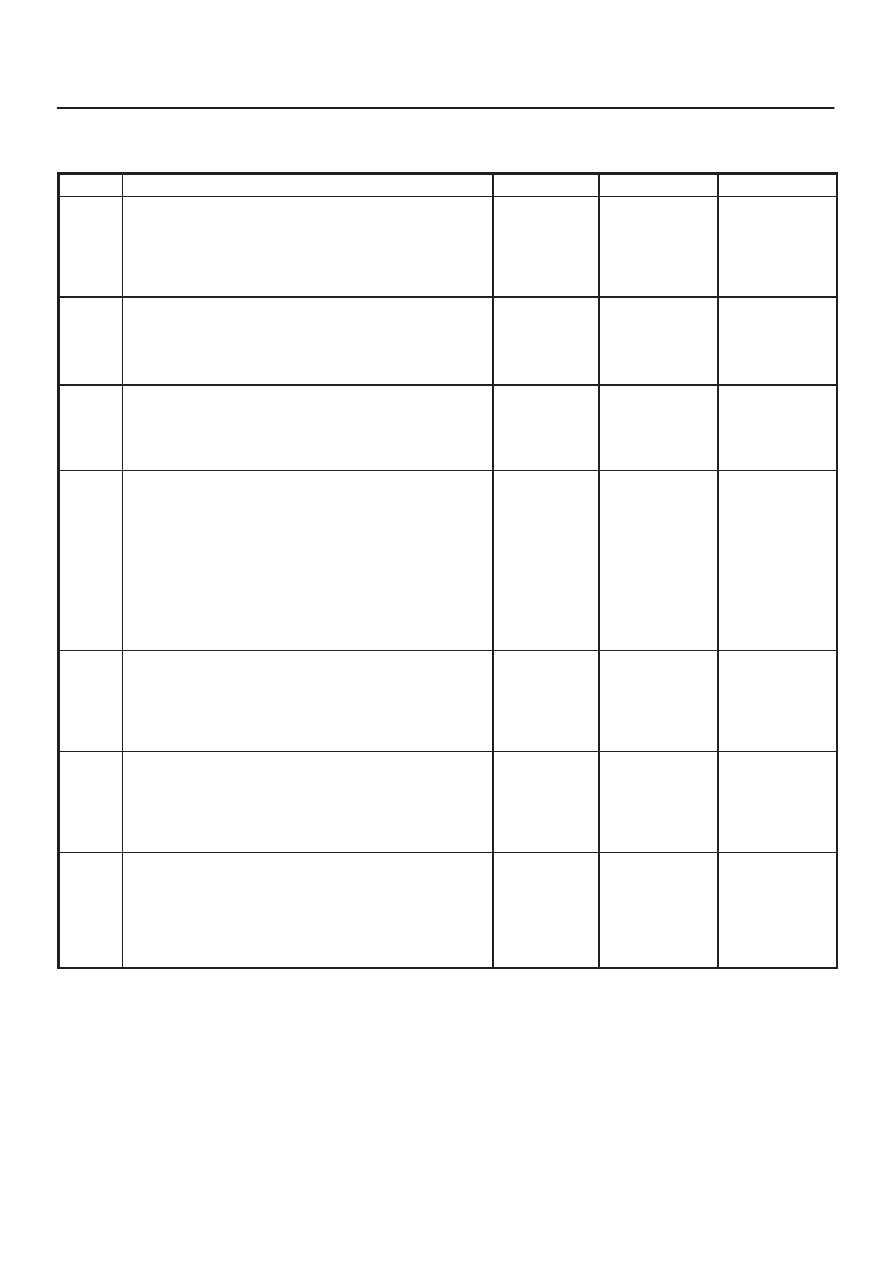Isuzu D-Max / Isuzu Rodeo (TFR/TFS). Manual - part 871

6E–213
3.2L ENGINE DRIVEABILITY AND EMISSIONS
Hesitation, Sag, Stumble Symptom
(Cont'd)
Step
No
Yes
Value(s)
Action
10
1. Check for proper ignition voltage output with spark
tester J 26792 (ST-125). Refer to
Electronic Ignition
System for the procedure.
2. If a problem is found, repair as necessary.
Was a problem found?
—
Verify repair
Go to
Step 11
11
1. Check for a loose ignition coil ground.
Refer to
Electronic Ignition System.
2. If a problem is found, repair as necessary.
Was a problem found?
—
Verify repair
Go to
Step 12
12
1. Check the ignition coils for cracks or carbon
tracking.
2. If a problem is found, repair as necessary.
Was a problem found?
—
Verify repair
Go to
Step 13
13
1. Remove spark plugs and check for wet plugs,
cracks, wear, improper gap, burned electrodes, or
heavy deposits. Refer to
Electronic Ignition
System.
NOTE: If spark plugs are gas or oil fouled, the cause of
the fouling must be determined before replacing the
spark plugs.
2. If a problem is found, repair as necessary.
Was a problem found?
—
Verify repair
Go to
Step 14
14
1. Check the ECM grounds for clearness, tightness
and proper routing. Refer to the ECM wiring
diagrams in Electrical Diagnosis.
2. If a problem is found, repair as necessary.
Was a problem found?
—
Verify repair
Go to
Step 15
15
1. Check the MAF sensor connections.
2. If a problem is found, replace the faulty terminals as
necessary. Refer to
Electrical Diagnosis for wiring
repair procedures.
Was a problem found?
—
Verify repair
Go to
Step 16
16
1. Visually/physically check vacuum hoses for splits,
kinks, and proper connections and routing as
shown on the “Vehicle Emission Control
Information” label.
2. If a problem is found, repair as necessary.
Was a problem found?
—
Verify repair
Go to
Step 17